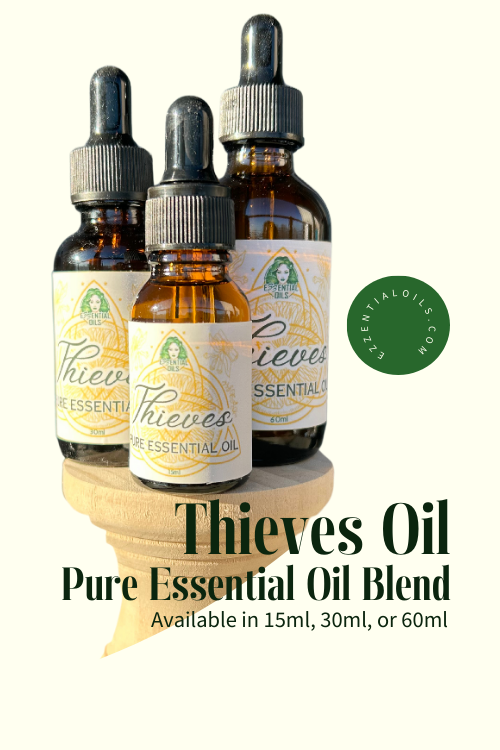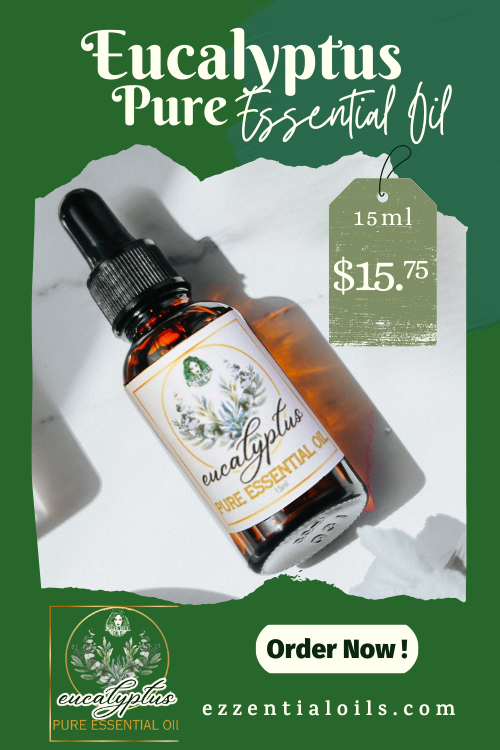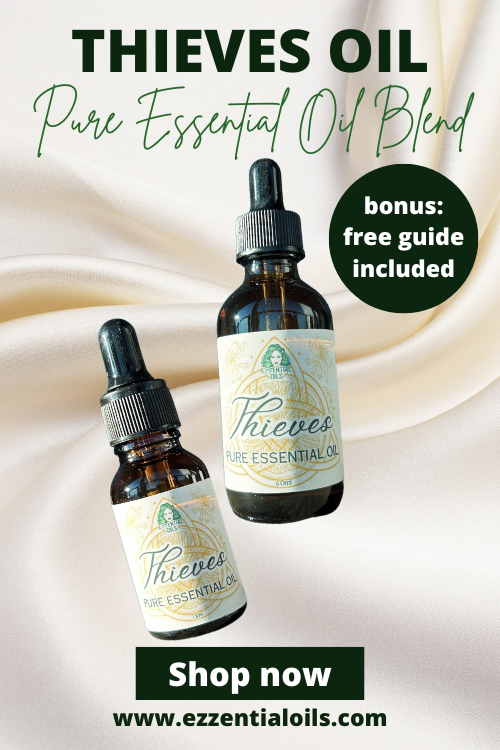Synergy:
The Art Of Essential Oil Blending
In the world of aromatherapy, the term "synergy" holds a special significance. It refers to the phenomenon where the combined effects of two or more essential oils are greater than the sum of their individual effects. By blending essential oils with complementary properties, aromatherapists can create powerful, harmonious combinations that enhance therapeutic outcomes. Let's explore what synergy means in essential oil blending, why it's important, and how to harness its potential.
What Is Synergy in Aromatherapy?
Synergy occurs when different essential oils work together to amplify their therapeutic benefits. For instance, while lavender is renowned for its calming properties and bergamot for uplifting the mood, blending these two oils can create a balanced effect that soothes anxiety while promoting a sense of optimism.
This concept of synergy is rooted in the intricate chemistry of essential oils. Each oil is a powerhouse of bioactive compounds—such as terpenes, aldehydes, esters, ketones, and phenols—that work together to create the oil's unique scent, therapeutic properties, and energetic profile. For example, lavender essential oil contains linalool and linalyl acetate, which are primarily responsible for its calming and relaxing effects. Similarly, eucalyptus oil is rich in eucalyptol, a compound known for its respiratory benefits.
When blended, the chemical compounds of different essential oils can interact in fascinating ways. These interactions may amplify the effects of certain compounds, reduce unwanted properties, or even create entirely new therapeutic benefits that neither oil could achieve on its own.
Examples of Synergistic Interactions
Stress Relief Blend:
Lavender and bergamot are well-known for their calming properties. Lavender's linalool helps relax the nervous system, while bergamot's limonene uplifts the mood. Together, they create a soothing and mood-enhancing blend that's more effective than either oil alone.
Immune Support Blend:
Tea tree oil is packed with terpinene-4-ol, known for its antimicrobial properties, while eucalyptus oil's eucalyptol supports clear breathing and respiratory health. Blending these oils not only boosts the body's defenses but also provides a refreshing and purifying effect.
Pain Relief Blend:
Peppermint oil's menthol provides a cooling and numbing sensation, while black pepper oil's beta-caryophyllene delivers warming and anti-inflammatory effects. Combined, they create a hot-and-cold synergy that's excellent for easing muscle pain or joint stiffness.
Sleep Support Blend:
Roman chamomile, with its high ester content, deeply calms the mind, while clary sage's linalyl acetate offers sedative properties. Together, they form a powerful blend that promotes deep, restful sleep.
Skin Healing Blend:
Frankincense, known for its rejuvenating and anti-inflammatory properties, works synergistically with myrrh, which has antiseptic and skin-soothing compounds. This duo is particularly effective for promoting skin regeneration and soothing irritated or damaged skin.
Focus and Clarity Blend:
Rosemary oil contains cineole, which improves memory and concentration, while lemon oil's limonene enhances alertness and clarity. Together, these oils create an energizing blend perfect for studying or working.
Chemical Interactions That Create Synergy
Complementary Actions: The antiseptic and anti-inflammatory effects of oregano (carvacrol) pair well with thyme (thymol) for fighting infections. Together, they deliver a potent punch against bacteria and viruses.
Mitigating Intensity: Cinnamon bark oil, rich in cinnamaldehyde, can be irritating on its own, but when blended with gentle oils like sandalwood or sweet orange, its warming properties are balanced, making the blend safe and effective.
Enhancing Absorption: Black pepper oil contains piperine, which can improve the skin's absorption of other oils. Blending it with oils like turmeric or ginger can increase their effectiveness for reducing inflammation.
In essence, the synergy of essential oils is like creating a symphony, where each oil contributes its unique “note” to the overall composition. The resulting blend is often more powerful, harmonious, and versatile than any single oil on its own, offering a multidimensional approach to healing and wellness.
The Importance of Synergy in Blending
Understanding and applying synergy in essential oil blending is key for both therapeutic and aesthetic purposes.
Enhanced Effectiveness: Blends created with synergy can target multiple aspects of wellness at once. For example, combining eucalyptus and tea tree oils not only supports respiratory health but also offers powerful antibacterial benefits.
Balanced Aroma Profiles: Synergy isn't just about therapeutic properties—it's also about creating a blend that smells pleasing. The right combination of oils can elevate a blend's fragrance, making it more enjoyable to use.
Custom Solutions: Synergistic blends allow for personalized aromatherapy solutions, tailored to address specific needs such as stress, insomnia, or skin care.
Crafting Synergistic Blends
Creating synergistic blends requires a thoughtful approach. Here are some tips to guide your process:
Understand the Oils: Familiarize yourself with the properties, aroma profiles, and safety considerations of each essential oil. A good understanding of their individual effects is the foundation of synergy.
Choose Complementary Oils: Pair oils with similar or complementary properties. For instance, pairing calming oils like chamomile and sandalwood can create a deeply relaxing blend, while combining energizing oils like peppermint and lemon can uplift and invigorate.
Use Proportions Wisely: Achieving synergy often depends on the right ratios. Start with small amounts, adjusting as needed to strike a perfect balance between therapeutic potency and aromatic harmony.
Test and Reflect: Blending is as much an art as it is a science. Experiment with different combinations, take notes, and reflect on how the blend makes you feel or addresses specific needs.
Examples of Synergistic Blends
Relaxation Blend: Lavender, ylang-ylang, and cedarwood
Focus and Clarity Blend: Rosemary, peppermint, and lemon
Immune Support Blend: Tea tree, eucalyptus, and frankincense
Mood-Lifting Blend: Bergamot, orange, and clary sage
Examples of Oils That May Not Mix Well
Clove and Lavender:
Clove oil is rich in eugenol, a potent compound with strong stimulating and warming properties, while lavender oil is known for its calming and soothing effects. When blended, their opposing energies can cancel each other out, diminishing the effectiveness of both oils.
Peppermint and Rosemary:
Both of these oils are stimulating and uplifting, which might seem like a good pairing. However, their high menthol (peppermint) and cineole (rosemary) content can sometimes create an overwhelming and sharp aroma that is too strong for practical use, particularly in sensitive individuals.
Citrus Oils and Spicy Oils (e.g., Lemon and Cinnamon):
Citrus oils like lemon are light and refreshing, while spicy oils like cinnamon are heavy and warming. The result can be an unbalanced blend where the cinnamon overpowers the citrus or creates a scent clash that feels jarring rather than harmonious.
Eucalyptus and Floral Oils (e.g., Eucalyptus and Rose):
Eucalyptus has a sharp, camphoraceous scent that doesn't always pair well with soft, delicate florals like rose or jasmine. This mismatch can result in an aroma that feels disjointed rather than balanced.
Tea Tree and Sweet Oils (e.g., Tea Tree and Vanilla):
Tea tree's medicinal and earthy scent doesn't blend smoothly with sweet or gourmand oils like vanilla. The combination can produce a clash of aromas that detracts from the therapeutic or aromatic value of the blend.
Why Some Oils Clash
Opposing Properties: Oils with opposite therapeutic effects (e.g., stimulating vs. sedating) may reduce each other's efficacy.
Overpowering Notes: Strong, dominant scents, such as oregano or cinnamon, can overshadow subtler oils, making the blend unbalanced.
Chemical Interactions: Some compounds may neutralize each other or create an unpleasant scent when mixed.
Personal Preferences: Scent perception is subjective, and what works for one person might not appeal to another.
Tips to Avoid Clashing Blends
Start Small: Begin with a drop or two of each oil when experimenting to avoid wasting oils if the blend doesn't work.
Test the Aroma: Smell your blend frequently during the mixing process to ensure the scents are complementing one another.
Use a Balanced Approach: Pair oils from the same family (e.g., citrus, floral, woody) or those with complementary properties for better harmony.
Consider a Base Note: A grounding oil like cedarwood or sandalwood can help tie together disparate scents, creating a more unified blend.
By understanding not just what works together but also what doesn't, you can refine your blending skills and ensure each creation is both effective and enjoyable. Aromatherapy is as much about balance as it is about experimentation, and avoiding clashing combinations is key to crafting synergistic blends that shine.
Synergy in Everyday Use
Once you've crafted your synergistic blends, incorporate them into your daily routine. Use them in a diffuser, add them to massage oils, or create DIY sprays for a personalized touch. The possibilities are endless when you understand the power of synergy.
Synergy in essential oil blending is both a science and an art, offering endless opportunities to enhance your aromatherapy practice. By understanding how oils interact and complement one another, you can craft blends that are not only therapeutically effective but also a joy to use. Start experimenting today, and unlock the boundless potential of synergy in your aromatherapy journey.
Please note, the International Federation of Aromatherapists do not recommend that Essential Oils be taken internally, unless under the supervision of a Medical Doctor, who is also qualified in clinical Aromatherapy. In addition, Essential Oils must be properly diluted before use, in order to avoid any damages to property or adverse physical effects (including injury or bodily harm).
This article is for information purposes only. All Ezzential Oils products are for external use only unless otherwise indicated. This information is not intended to diagnose, treat, cure, or prevent any disease, and it should not be used by anyone who is pregnant or under the care of a medical practitioner. Please refer to our policies for further details, and our disclaimer below.
What Is Synergy in Aromatherapy?
Synergy occurs when different essential oils work together to amplify their therapeutic benefits. For instance, while lavender is renowned for its calming properties and bergamot for uplifting the mood, blending these two oils can create a balanced effect that soothes anxiety while promoting a sense of optimism.
This concept of synergy is rooted in the intricate chemistry of essential oils. Each oil is a powerhouse of bioactive compounds—such as terpenes, aldehydes, esters, ketones, and phenols—that work together to create the oil's unique scent, therapeutic properties, and energetic profile. For example, lavender essential oil contains linalool and linalyl acetate, which are primarily responsible for its calming and relaxing effects. Similarly, eucalyptus oil is rich in eucalyptol, a compound known for its respiratory benefits.
When blended, the chemical compounds of different essential oils can interact in fascinating ways. These interactions may amplify the effects of certain compounds, reduce unwanted properties, or even create entirely new therapeutic benefits that neither oil could achieve on its own.
Examples of Synergistic Interactions
Stress Relief Blend:
Lavender and bergamot are well-known for their calming properties. Lavender's linalool helps relax the nervous system, while bergamot's limonene uplifts the mood. Together, they create a soothing and mood-enhancing blend that's more effective than either oil alone.
Immune Support Blend:
Tea tree oil is packed with terpinene-4-ol, known for its antimicrobial properties, while eucalyptus oil's eucalyptol supports clear breathing and respiratory health. Blending these oils not only boosts the body's defenses but also provides a refreshing and purifying effect.
Pain Relief Blend:
Peppermint oil's menthol provides a cooling and numbing sensation, while black pepper oil's beta-caryophyllene delivers warming and anti-inflammatory effects. Combined, they create a hot-and-cold synergy that's excellent for easing muscle pain or joint stiffness.
Sleep Support Blend:
Roman chamomile, with its high ester content, deeply calms the mind, while clary sage's linalyl acetate offers sedative properties. Together, they form a powerful blend that promotes deep, restful sleep.
Skin Healing Blend:
Frankincense, known for its rejuvenating and anti-inflammatory properties, works synergistically with myrrh, which has antiseptic and skin-soothing compounds. This duo is particularly effective for promoting skin regeneration and soothing irritated or damaged skin.
Focus and Clarity Blend:
Rosemary oil contains cineole, which improves memory and concentration, while lemon oil's limonene enhances alertness and clarity. Together, these oils create an energizing blend perfect for studying or working.
Chemical Interactions That Create Synergy
Complementary Actions: The antiseptic and anti-inflammatory effects of oregano (carvacrol) pair well with thyme (thymol) for fighting infections. Together, they deliver a potent punch against bacteria and viruses.
Mitigating Intensity: Cinnamon bark oil, rich in cinnamaldehyde, can be irritating on its own, but when blended with gentle oils like sandalwood or sweet orange, its warming properties are balanced, making the blend safe and effective.
Enhancing Absorption: Black pepper oil contains piperine, which can improve the skin's absorption of other oils. Blending it with oils like turmeric or ginger can increase their effectiveness for reducing inflammation.
In essence, the synergy of essential oils is like creating a symphony, where each oil contributes its unique “note” to the overall composition. The resulting blend is often more powerful, harmonious, and versatile than any single oil on its own, offering a multidimensional approach to healing and wellness.
The Importance of Synergy in Blending
Understanding and applying synergy in essential oil blending is key for both therapeutic and aesthetic purposes.
Enhanced Effectiveness: Blends created with synergy can target multiple aspects of wellness at once. For example, combining eucalyptus and tea tree oils not only supports respiratory health but also offers powerful antibacterial benefits.
Balanced Aroma Profiles: Synergy isn't just about therapeutic properties—it's also about creating a blend that smells pleasing. The right combination of oils can elevate a blend's fragrance, making it more enjoyable to use.
Custom Solutions: Synergistic blends allow for personalized aromatherapy solutions, tailored to address specific needs such as stress, insomnia, or skin care.
Crafting Synergistic Blends
Creating synergistic blends requires a thoughtful approach. Here are some tips to guide your process:
Understand the Oils: Familiarize yourself with the properties, aroma profiles, and safety considerations of each essential oil. A good understanding of their individual effects is the foundation of synergy.
Choose Complementary Oils: Pair oils with similar or complementary properties. For instance, pairing calming oils like chamomile and sandalwood can create a deeply relaxing blend, while combining energizing oils like peppermint and lemon can uplift and invigorate.
Use Proportions Wisely: Achieving synergy often depends on the right ratios. Start with small amounts, adjusting as needed to strike a perfect balance between therapeutic potency and aromatic harmony.
Test and Reflect: Blending is as much an art as it is a science. Experiment with different combinations, take notes, and reflect on how the blend makes you feel or addresses specific needs.
Examples of Synergistic Blends
Relaxation Blend: Lavender, ylang-ylang, and cedarwood
Focus and Clarity Blend: Rosemary, peppermint, and lemon
Immune Support Blend: Tea tree, eucalyptus, and frankincense
Mood-Lifting Blend: Bergamot, orange, and clary sage
Examples of Oils That May Not Mix Well
Clove and Lavender:
Clove oil is rich in eugenol, a potent compound with strong stimulating and warming properties, while lavender oil is known for its calming and soothing effects. When blended, their opposing energies can cancel each other out, diminishing the effectiveness of both oils.
Peppermint and Rosemary:
Both of these oils are stimulating and uplifting, which might seem like a good pairing. However, their high menthol (peppermint) and cineole (rosemary) content can sometimes create an overwhelming and sharp aroma that is too strong for practical use, particularly in sensitive individuals.
Citrus Oils and Spicy Oils (e.g., Lemon and Cinnamon):
Citrus oils like lemon are light and refreshing, while spicy oils like cinnamon are heavy and warming. The result can be an unbalanced blend where the cinnamon overpowers the citrus or creates a scent clash that feels jarring rather than harmonious.
Eucalyptus and Floral Oils (e.g., Eucalyptus and Rose):
Eucalyptus has a sharp, camphoraceous scent that doesn't always pair well with soft, delicate florals like rose or jasmine. This mismatch can result in an aroma that feels disjointed rather than balanced.
Tea Tree and Sweet Oils (e.g., Tea Tree and Vanilla):
Tea tree's medicinal and earthy scent doesn't blend smoothly with sweet or gourmand oils like vanilla. The combination can produce a clash of aromas that detracts from the therapeutic or aromatic value of the blend.
Why Some Oils Clash
Opposing Properties: Oils with opposite therapeutic effects (e.g., stimulating vs. sedating) may reduce each other's efficacy.
Overpowering Notes: Strong, dominant scents, such as oregano or cinnamon, can overshadow subtler oils, making the blend unbalanced.
Chemical Interactions: Some compounds may neutralize each other or create an unpleasant scent when mixed.
Personal Preferences: Scent perception is subjective, and what works for one person might not appeal to another.
Tips to Avoid Clashing Blends
Start Small: Begin with a drop or two of each oil when experimenting to avoid wasting oils if the blend doesn't work.
Test the Aroma: Smell your blend frequently during the mixing process to ensure the scents are complementing one another.
Use a Balanced Approach: Pair oils from the same family (e.g., citrus, floral, woody) or those with complementary properties for better harmony.
Consider a Base Note: A grounding oil like cedarwood or sandalwood can help tie together disparate scents, creating a more unified blend.
By understanding not just what works together but also what doesn't, you can refine your blending skills and ensure each creation is both effective and enjoyable. Aromatherapy is as much about balance as it is about experimentation, and avoiding clashing combinations is key to crafting synergistic blends that shine.
Synergy in Everyday Use
Once you've crafted your synergistic blends, incorporate them into your daily routine. Use them in a diffuser, add them to massage oils, or create DIY sprays for a personalized touch. The possibilities are endless when you understand the power of synergy.
Synergy in essential oil blending is both a science and an art, offering endless opportunities to enhance your aromatherapy practice. By understanding how oils interact and complement one another, you can craft blends that are not only therapeutically effective but also a joy to use. Start experimenting today, and unlock the boundless potential of synergy in your aromatherapy journey.
Safety Information
Please note, the International Federation of Aromatherapists do not recommend that Essential Oils be taken internally, unless under the supervision of a Medical Doctor, who is also qualified in clinical Aromatherapy. In addition, Essential Oils must be properly diluted before use, in order to avoid any damages to property or adverse physical effects (including injury or bodily harm).
This article is for information purposes only. All Ezzential Oils products are for external use only unless otherwise indicated. This information is not intended to diagnose, treat, cure, or prevent any disease, and it should not be used by anyone who is pregnant or under the care of a medical practitioner. Please refer to our policies for further details, and our disclaimer below.













